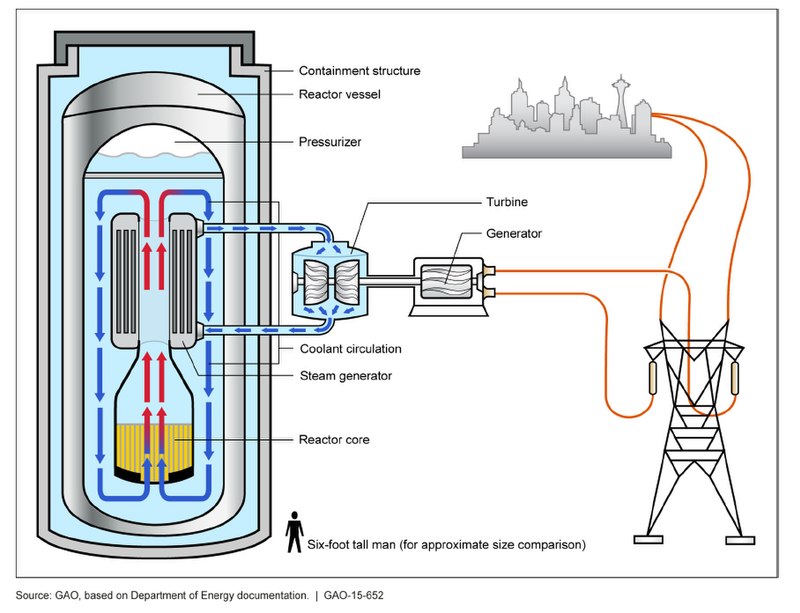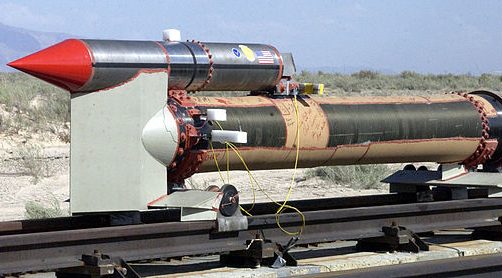Small Modular Reactors: The Future of Clean Energy for Big Tech and Beyond
Small Modular Reactors:
This essay, inspired by Sahana Venugopal’s article “Why are Big Tech Companies Such as Google Scouting for Nuclear Power?” in The Hindu (October 23, 2024), focuses on Small Modular Reactors (SMRs). SMRs are a major development in nuclear energy, offering better safety, flexibility, and affordability. These features make SMRs a smart and clean energy option for big technology companies like Google, Amazon, and Microsoft, which are looking for ways to reduce carbon emissions and meet the rising energy needs of their growing data centres.
As the global energy landscape evolves, many challenges arise in meeting the increasing demand for electricity while reducing carbon emissions. One of the emerging solutions to these challenges is the Small Modular Reactors (SMR). SMRs are compact, nuclear fission reactors that promise safer, more flexible, and cost-effective nuclear power production compared to traditional reactors. The scalability and versatility of SMRs make them particularly attractive to Big Tech companies, like Google, Microsoft, and Amazon, which are rapidly expanding their infrastructure and seeking sustainable ways to power their data centres.
This essay explores the key features, advantages, environmental concerns, and safety comparisons of SMRs versus traditional nuclear reactors. It also looks at how SMRs are being embraced by tech giants and their role in shaping the future of energy. Ultimately, SMRs present a promising path for cleaner, more reliable energy solutions, but also face certain challenges that must be addressed to realise their full potential.
Understanding SMRs(Small Modular Reactors): Size, Modularity, and Flexibility
Small Modular Reactors are a newer breed of nuclear reactors that stand out due to their significantly smaller size compared to traditional nuclear power plants. Conventional reactors typically produce over 1,000 megawatts (MW) of electricity, but SMRs are designed to produce between a few MW and up to 300 MW per unit. This smaller size allows them to be pre-constructed in factories and transported in modules, making on-site assembly quicker and more cost-efficient.
The modularity of SMRs is one of their most attractive features. Instead of building one large reactor, multiple smaller units can be added over time to match the growing energy demand. For instance, in rural or remote areas, a few modules could initially meet local energy needs, with additional modules added as demand increases. This ability to scale incrementally makes SMRs flexible enough to fit a variety of grid capacities and infrastructure conditions.
Beyond generating electricity, SMRs can also serve other purposes. They can provide process heat for industrial applications, desalinate seawater to produce drinking water, or heat buildings in cold climates. This multi-functionality makes SMRs a versatile tool for both industrial and public use.

Advantages of SMRs(Small Modular Reactors):
- Reduced Capital Costs: One of the biggest advantages of SMRs is their lower upfront costs compared to traditional nuclear reactors. Because much of the construction happens in factories, the on-site work is reduced, minimising both labour and material expenses. The smaller size of SMRs means that governments or companies do not need to make the same huge capital investments required for larger plants.
- Shorter Construction Times: SMRs can be built and deployed faster than traditional reactors. Conventional reactors can take more than a decade to build, whereas SMRs can be operational in as little as three to five years, depending on the specific design. This shorter construction timeline allows for quicker responses to rising energy demands.
- Enhanced Safety Features: SMRs are often designed with passive safety systems. This means that in the event of an emergency, the reactor will cool down and shut off automatically, without requiring human intervention or external power sources. Such systems use natural physical principles, like gravity or natural air circulation, to ensure safety. As a result, SMRs are less vulnerable to human error or mechanical failure, and the smaller amount of nuclear fuel used in each reactor further reduces the risks of accidents.
- Environmental Benefits: As low-carbon electricity generators, SMRs contribute to reducing greenhouse gas emissions. This is especially important in the fight against climate change. Since SMRs can produce power 24/7, they provide a consistent energy source to complement intermittent renewable energy sources like wind and solar. This continuous energy output is crucial for powering industries and infrastructures that require a constant energy supply, such as data centres.
Environmental Concerns and Challenges of SMRs(Small Modular Reactors):
While SMRs hold great potential for clean energy, they also present certain environmental and safety concerns.
- Nuclear Waste</strong>: Like all nuclear reactors, SMRs(Small Modular Reactors) generate radioactive waste, which must be carefully managed and stored. Finding long-term storage solutions for nuclear waste is a complex and costly process, and the long-lasting nature of radioactive materials means that the waste remains hazardous for thousands of years.
- Risk of Accidents: Even though SMRs are designed with enhanced safety features, there is always a risk of nuclear accidents. While the smaller size of SMRs reduces the potential impact of such incidents, the consequences of a serious accident, including radiation leakage, can still be severe. Furthermore, locating SMRs in or near densely populated or environmentally sensitive areas could amplify these risks if an accident were to occur.
- Siting and Infrastructure Issues: SMRs offer more flexibility in terms of where they can be deployed, but they must still be carefully sited to avoid environmental risks. For example, placing SMRs in areas prone to natural disasters, such as earthquakes or tsunamis, can increase the risk of accidents. In the past, disasters like the Fukushima accident in Japan highlighted the catastrophic potential when nuclear facilities are affected by natural events.
Why Big Tech Companies are Embracing SMRs
As data centres grow in size and number to meet the needs of artificial intelligence (AI) technologies and cloud computing, the energy consumption of companies like Google, Microsoft, and Amazon is skyrocketing. For example, Google’s global greenhouse gas emissions increased by 13% in 2023 due to its expanding technical infrastructure and energy-intensive AI systems. To address these challenges, Big Tech is turning to nuclear energy, particularly through partnerships with SMR developers.
Google, for instance, has signed an agreement with Kairos Power to purchase 500 MW of nuclear energy from SMRs by 2030, aiming to meet the energy demands of its AI and data centres. Similarly, Microsoft has partnered with Constellation to restart the Three Mile Island Unit 1 nuclear facility, which is expected to add 835 MW of clean energy to the U.S. grid. Amazon, too, is supporting nuclear energy projects, including investments in SMR technologies and partnerships with developers like Energy Northwest.
Big Tech’s interest in SMRs stems from several factors:
- Reliability: Unlike solar or wind power, nuclear energy provides a stable and round-the-clock energy supply, which is crucial for the continuous operation of data centres and AI systems.
- Lower Carbon Footprint: SMRs allow tech companies to reduce their carbon emissions and meet corporate sustainability goals.
- Scalability: The modular nature of SMRs allows companies to expand their energy capacity as their operations grow, without the need for a massive, upfront investment in traditional nuclear plants.
Safety and Public Perception
Despite the benefits, public perception of nuclear energy remains a hurdle. Incidents such as Chernobyl and Fukushima have left lasting impressions of nuclear energy being dangerous and accident-prone. Environmental groups, like Friends of the Earth, argue that nuclear power is one of the “dirtiest, most dangerous, and most expensive sources of energy”. These perceptions, combined with concerns over nuclear waste and potential accidents, contribute to a reputation problem for nuclear energy, which SMRs must overcome if they are to be widely adopted.
Conclusion: The Future of Energy with SMRs
Small Modular Reactors present a significant opportunity for cleaner, more sustainable energy solutions. Their smaller size, modularity, enhanced safety features, and ability to provide round-the-clock power make them particularly attractive to industries and tech giants like Google and Microsoft, which face increasing energy demands. SMRs could play a crucial role in reducing global greenhouse gas emissions and supporting the transition to a low-carbon economy.
However, for SMRs to truly succeed, challenges related to nuclear waste management, accident risks, and public perception must be addressed. As the technology continues to advance and more companies invest in SMR projects, the future of nuclear energy looks brighter, but it must be pursued with care and responsibility. The next few decades will likely see SMRs become a critical component of the global energy landscape, driving both technological innovation and environmental sustainability.
Subscribe to our Youtube Channel for more Valuable Content – TheStudyias
Download the App to Subscribe to our Courses – Thestudyias
The Source’s Authority and Ownership of the Article is Claimed By THE STUDY IAS BY MANIKANT SINGH





